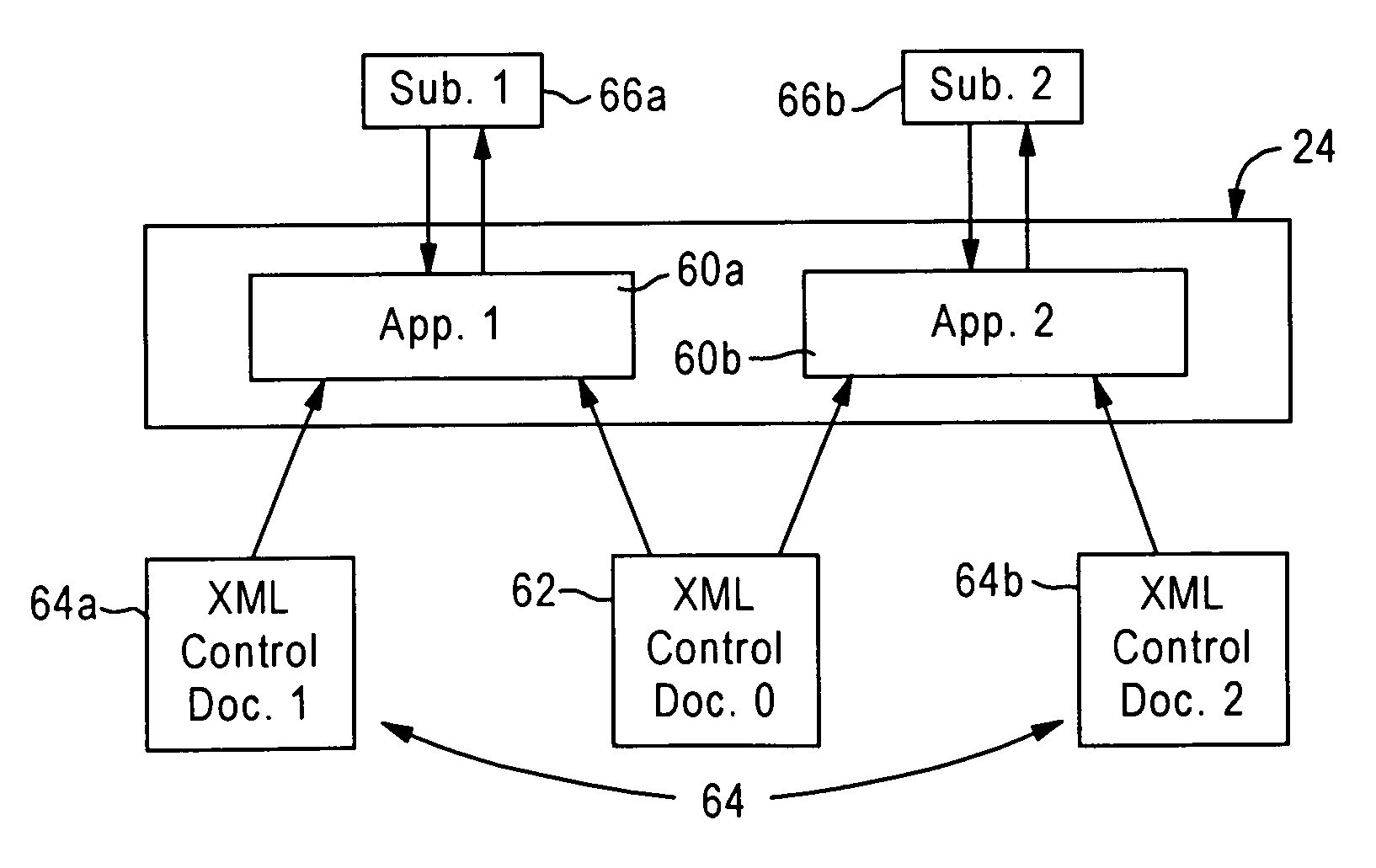Arrangement for controlling and logging voice enabled web applications using extensible markup language documents
a markup language and extensible technology, applied in the direction of web data retrieval, website content management, instruments, etc., can solve the problems of inability to provide enhanced services to subscribers of public switched telephone networks directly affected by the limitations of public switched telephone networks, web-based applications running in the ip network, and inability to maintain application state,
- Summary
- Abstract
- Description
- Claims
- Application Information
AI Technical Summary
Benefits of technology
Problems solved by technology
Method used
Image
Examples
Embodiment Construction
[0026]The ability to provide unified voice messaging services via an IP network enables existing web servers on the World Wide Web or in corporate intranets to support telephone applications on a scalable and economic platform. Moreover, the use of XML documents in defining executable voice applications enables use of open standards that permits web programmers to use forms-based web programming techniques to design and implement voice telephone applications, without the necessity of programming using conventional programming languages. In addition, the use of XML documents in defining executable voice applications provides a structured application tool that enables a user to easily customize a voice application by making relatively minor changes to the XML documents. Additional details regarding the use of XML documents to define voice-enabled web applications is described in commonly-assigned, copending application Ser. No. 09 / 501,516, filed Feb. 9, 2000, entitled Arrangement for ...
PUM
 Login to View More
Login to View More Abstract
Description
Claims
Application Information
 Login to View More
Login to View More - R&D
- Intellectual Property
- Life Sciences
- Materials
- Tech Scout
- Unparalleled Data Quality
- Higher Quality Content
- 60% Fewer Hallucinations
Browse by: Latest US Patents, China's latest patents, Technical Efficacy Thesaurus, Application Domain, Technology Topic, Popular Technical Reports.
© 2025 PatSnap. All rights reserved.Legal|Privacy policy|Modern Slavery Act Transparency Statement|Sitemap|About US| Contact US: help@patsnap.com



